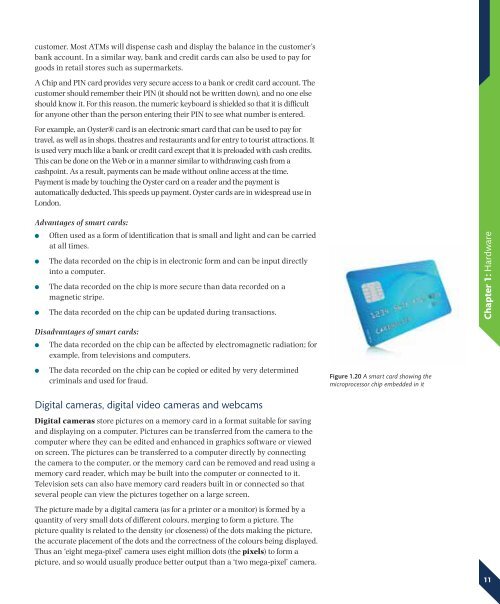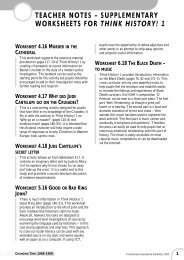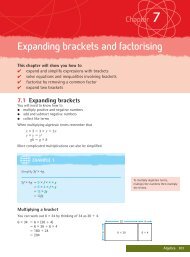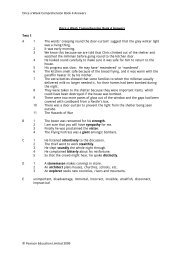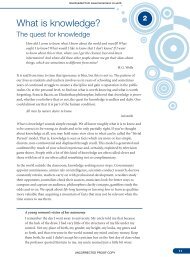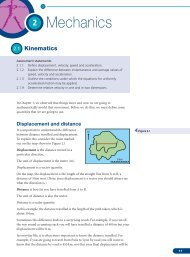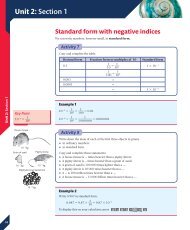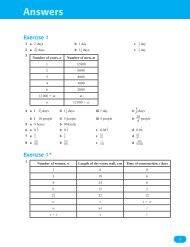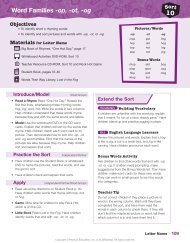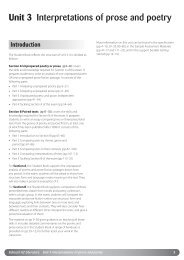Chapter 1: Hardware - Pearson Schools
Chapter 1: Hardware - Pearson Schools
Chapter 1: Hardware - Pearson Schools
Create successful ePaper yourself
Turn your PDF publications into a flip-book with our unique Google optimized e-Paper software.
customer. Most ATMs will dispense cash and display the balance in the customer’s<br />
bank account. In a similar way, bank and credit cards can also be used to pay for<br />
goods in retail stores such as supermarkets.<br />
A Chip and PIN card provides very secure access to a bank or credit card account. The<br />
customer should remember their PIN (it should not be written down), and no one else<br />
should know it. For this reason, the numeric keyboard is shielded so that it is difficult<br />
for anyone other than the person entering their PIN to see what number is entered.<br />
For example, an Oyster® card is an electronic smart card that can be used to pay for<br />
travel, as well as in shops, theatres and restaurants and for entry to tourist attractions. It<br />
is used very much like a bank or credit card except that it is preloaded with cash credits.<br />
This can be done on the Web or in a manner similar to withdrawing cash from a<br />
cashpoint. As a result, payments can be made without online access at the time.<br />
Payment is made by touching the Oyster card on a reader and the payment is<br />
automatically deducted. This speeds up payment. Oyster cards are in widespread use in<br />
London.<br />
Advantages of smart cards:<br />
<br />
<br />
<br />
<br />
Often used as a form of identification that is small and light and can be carried<br />
at all times.<br />
The data recorded on the chip is in electronic form and can be input directly<br />
into a computer.<br />
The data recorded on the chip is more secure than data recorded on a<br />
magnetic stripe.<br />
The data recorded on the chip can be updated during transactions.<br />
<strong>Chapter</strong> 1: <strong>Hardware</strong><br />
Disadvantages of smart cards:<br />
<br />
<br />
The data recorded on the chip can be affected by electromagnetic radiation; for<br />
example, from televisions and computers.<br />
The data recorded on the chip can be copied or edited by very determined<br />
criminals and used for fraud.<br />
Figure 1.20 A smart card showing the<br />
microprocessor chip embedded in it<br />
Digital cameras, digital video cameras and webcams<br />
Digital cameras store pictures on a memory card in a format suitable for saving<br />
and displaying on a computer. Pictures can be transferred from the camera to the<br />
computer where they can be edited and enhanced in graphics software or viewed<br />
on screen. The pictures can be transferred to a computer directly by connecting<br />
the camera to the computer, or the memory card can be removed and read using a<br />
memory card reader, which may be built into the computer or connected to it.<br />
Television sets can also have memory card readers built in or connected so that<br />
several people can view the pictures together on a large screen.<br />
The picture made by a digital camera (as for a printer or a monitor) is formed by a<br />
quantity of very small dots of different colours, merging to form a picture. The<br />
picture quality is related to the density (or closeness) of the dots making the picture,<br />
the accurate placement of the dots and the correctness of the colours being displayed.<br />
Thus an ‘eight mega-pixel’ camera uses eight million dots (the pixels) to form a<br />
picture, and so would usually produce better output than a ‘two mega-pixel’ camera.<br />
11


